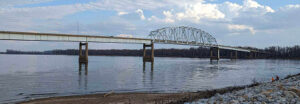As communities in Florida deal with the impacts of Hurricane Milton, our thoughts are with those responding and recovering from the storm. To support leaders during the aftermath of Milton, the American Flood Coalition compiled these resources.
Florida assistance details
Florida has received a federal disaster declaration for Milton.
NOTE: The following information is current as of October 15, 2024 but is expected to change. AFC will regularly update this page.
To check if you are in a designated area eligible for Public Assistance, review FEMA’s website for DR-4834-FL.
Prospective Public Assistance applicants in Florida should contact the Florida Division of Emergency Management by phone (850-815-4485) or email (RPA.HELP@em.myflorida.com) to submit a Request for Public Assistance by November 10, 2024.
Learn more about the Public Assistance program in Florida.
FEMA Public Assistance
FEMA’s Public Assistance program can help communities shoulder the burden of recovery from the impacts of Hurricane Milton.
The Public Assistance program helps eligible state, local, territorial, and tribal governments, as well as certain nonprofits, quickly respond to and recover from major disasters or emergencies declared by the president. Governments must submit a Request for Public Assistance within 30 days of the emergency declaration date, unless an extension is granted.
There are two types of eligible work under the Public Assistance program: Emergency Work and Permanent Work.
Public Assistance for Emergency Work
Public Assistance for Emergency Work includes efforts to save lives; protect public health and safety; protect improved property; and eliminate or reduce the immediate threat of additional damage. Public Assistance for Emergency Work falls into two categories:
- Debris Removal (Category A): Includes clearing, removing, and disposing of debris from public and private property, if in the public interest.
- Emergency Protective Measures (Category B): Includes efforts taken before, during, and after an incident to eliminate or lessen threats to lives, public health, and safety; or to eliminate or reduce threats of significant additional damage to public or private property in a cost-effective manner.
Public Assistance for Emergency Work must be completed within six months of the emergency declaration date, unless an extension is granted.
Public Assistance for Permanent Work
Public Assistance for Permanent Work includes efforts to restore disaster-damaged public facilities and eligible private nonprofit facilities. Public Assistance for Permanent Work falls into five categories:
- Roads and Bridges (Category C): Includes paved, gravel, or dirt roads.
- Water Control Facilities (Category D): Includes dams and reservoirs, levees and floodwalls, aqueducts, navigational waterways, and shipping channels.
- Buildings and Equipment (Category E): Includes structural and nonstructural components, such as mechanical, electrical, and plumbing systems, as well as building contents, equipment, and furnishings; equipment includes vehicle and construction equipment.
- Utilities (Category F): Includes water storage, power generation, and sewage collection utilities, as well as communication systems.
- Parks, Recreational, and Other (Category G): Includes mass transit, beaches, boat docks, and other facilities that do not fall under the other categories.
Public Assistance for Permanent Work must be completed within 18 months of the emergency declaration date, unless an extension is granted.
Checklist for immediate needs
After a disaster, the top priority of local leaders is safety. But it can be tough to know where to start and what to prioritize. This checklist focuses on seven immediate needs for a community during response and recovery.

|
|
||
4 steps for setting up a long-term recovery |
||
|
After disasters like Hurricane Milton, local leaders often stare down complex, years-long recoveries. To help you jumpstart the recovery and avoid common mistakes, the American Flood Coalition simplified this process into four clear steps.
|







